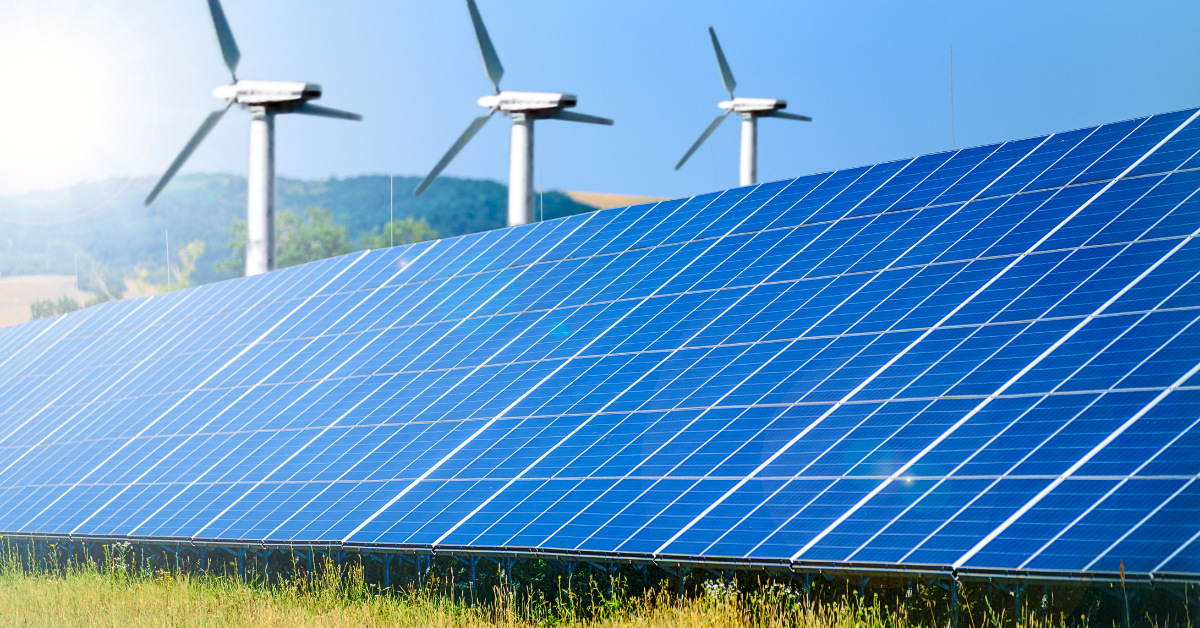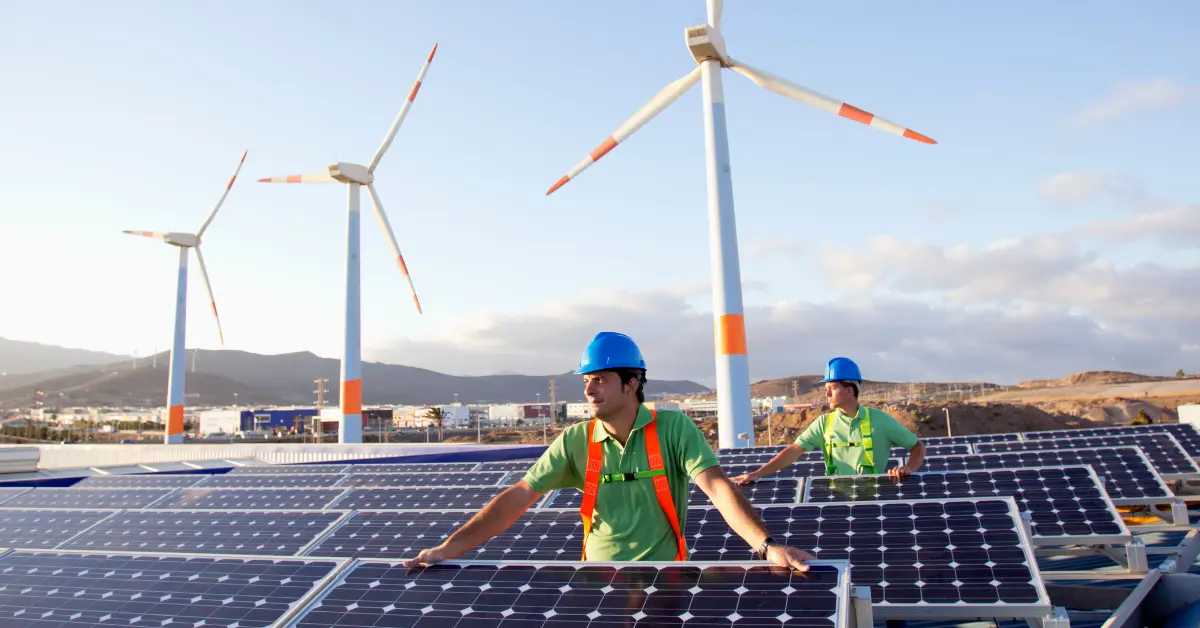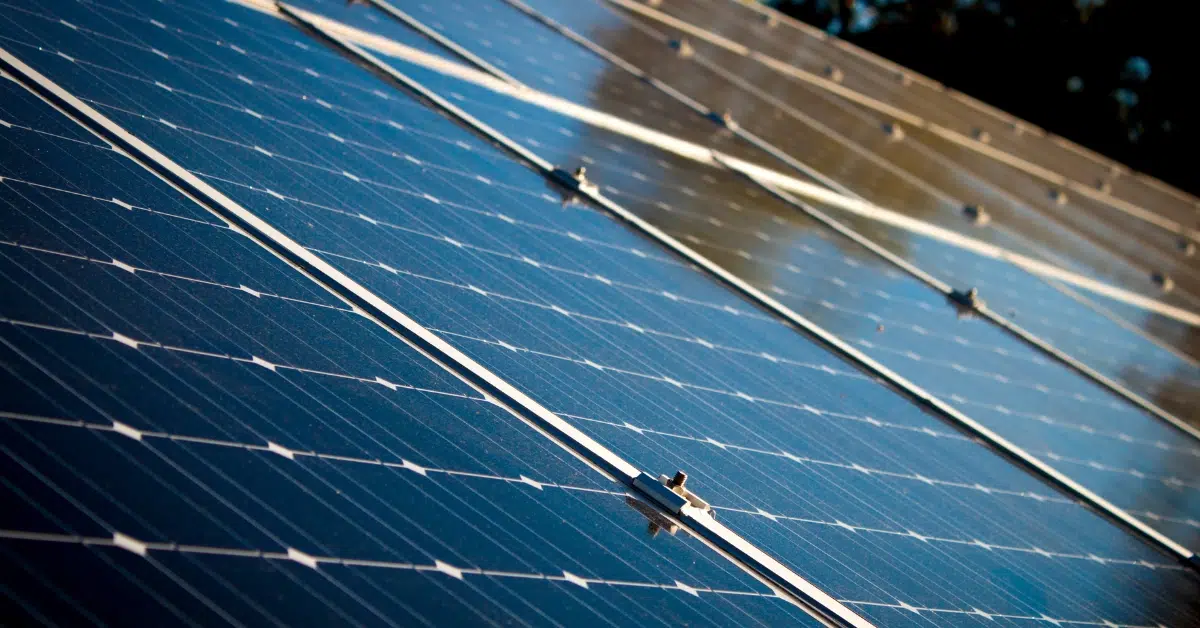The Evolving Energy Landscape reflects significant changes in how energy is produced and consumed. Renewable energy Oklahoma has become crucial in addressing global environmental challenges. Oklahoma plays a pivotal role in this shift. The state ranks among the top in the U.S. for renewable energy Oklahoma production. Wind energy contributes significantly, with Oklahoma ranking third in the nation for electricity generation from wind. Companies like American Electric Power invest heavily in the state’s renewable energy Oklahoma resources, further boosting its capacity.
Current State of Renewable Energy Oklahoma

Overview of Renewable Energy Sources
Wind Energy
Oklahoma stands as a leader in wind energy production. Oklahoma ranks third in the nation for electricity generation from wind. In 2022, wind supplied 44% of Oklahoma’s total electricity generation. This significant contribution highlights the state’s robust wind resources. Oklahoma’s wind farms generate enough electricity to power millions of homes. The state’s vast open spaces and favorable wind conditions make it an ideal location for wind energy projects.
Solar Energy
Solar energy is also gaining traction in Oklahoma. The state has ample sunlight, making it suitable for solar power generation. Companies like Amazon have invested in solar farms within the state. These investments boost local economies and increase the state’s renewable energy capacity. Solar energy contributes to reducing greenhouse gas emissions and diversifying the energy mix.
Biomass and Other Sources
Biomass energy in Oklahoma includes agricultural residues, wood waste, and other organic materials. These sources provide a sustainable way to produce energy. Biomass energy helps reduce waste and lower carbon emissions. Other renewable sources, such as geothermal energy, also play a role in Oklahoma’s energy landscape. These diverse sources contribute to the state’s overall renewable energy production.
Statistics and Data on Renewable Energy Oklahoma
Installed Capacity
Oklahoma boasts significant installed capacity for renewable energy. The state ranks second in the U.S. for installed wind energy capacity, with 11,680.5 megawatts. This capacity supports the state’s growing energy needs. Solar energy installations are also on the rise. Investments in renewable energy infrastructure continue to expand Oklahoma’s capacity.
Energy Production Figures
The amount of renewable energy produced in Oklahoma is impressive. In 2022, renewable sources generated 47% of the state’s total electricity. Wind energy accounted for the largest share, supplying 44% of the state’s electricity. The remaining renewable energy came from solar, biomass, and other sources. These figures highlight Oklahoma’s commitment to renewable energy production.
Key Players and Stakeholders
Government Agencies
Government agencies play a crucial role in promoting renewable energy in Oklahoma. The Oklahoma Corporation Commission oversees energy regulations and policies. The commission ensures that renewable energy projects comply with state laws. The Oklahoma Department of Commerce also supports renewable energy initiatives. These agencies work together to create a favorable environment for renewable energy development.
Private Sector Companies
Private sector companies drive much of the renewable energy growth in Oklahoma. Companies like American Electric Power invest heavily in the state’s renewable resources. Norwegian solar energy company NorSun plans a $620 million investment in Oklahoma. These investments create jobs and stimulate the local economy. Private sector involvement is essential for the continued expansion of renewable energy in the state.
Technological Advancements in Renewable Energy

Advances in Solar Technology
Photovoltaic Cells
Solar technology has seen remarkable progress in recent years. Photovoltaic (PV) cells, which convert sunlight into electricity, have become more efficient and affordable. The California Daily Energy Report notes an 82% decline in the cost of utility-scale solar photovoltaics between 2010 and 2019. This reduction makes solar energy more accessible to consumers and businesses. Improved PV cell designs enhance energy conversion rates, maximizing electricity production from available sunlight.
Solar Storage Solutions
Energy storage solutions play a vital role in the effectiveness of solar power. Advanced battery technologies store excess energy generated during sunny periods. This stored energy can be used when sunlight is insufficient. Companies invest heavily in developing efficient storage systems. For instance, NorSun’s $620 million investment in Oklahoma aims to boost solar wafer manufacturing. These advancements support the growth of the renewable energy sector, ensuring a reliable power supply.
Innovations in Wind Technology
Turbine Efficiency
Recent advancements in wind energy technology have significantly improved turbine efficiency. Modern turbines now capture more wind, converting it into electricity more effectively. Researchers focus on reducing costs and enhancing the resilience of these systems. The California Daily Energy Report highlights that between 2010 and 2019, the cost of onshore wind fell by 39%. This decline results from increased demand and economies of scale. Enhanced turbine designs contribute to this efficiency, making wind energy a more viable option for large-scale electricity generation.
Grid Integration
Integrating wind energy into the grid presents challenges. However, technological advancements address these issues. Improved grid integration methods ensure a stable and reliable power supply. Advanced software and hardware solutions manage the variability of wind energy. These systems balance supply and demand, ensuring consistent electricity flow. Energy Data from the International Energy Agency predicts that renewable sources will meet over 90% of the increase in global demand by 2025. Effective grid integration is crucial for achieving this goal.
Emerging Technologies
Bioenergy
Bioenergy offers a sustainable way to produce electricity. This technology uses organic materials such as agricultural residues and wood waste. Bioenergy helps reduce waste and lower carbon emissions. Researchers work on improving the efficiency and cost-effectiveness of bioenergy systems. These efforts contribute to the diversification of the energy mix. Oklahoma’s abundant natural resources provide ample opportunities for bioenergy development.
Geothermal Energy
Geothermal energy harnesses heat from the Earth’s core to generate electricity. This renewable source offers a consistent and reliable power supply. Advances in drilling and extraction technologies make geothermal energy more accessible. Researchers focus on reducing costs and mitigating environmental impacts. Geothermal energy complements other renewable sources, contributing to a balanced and sustainable energy system.
Policy and Regulatory Framework
State Policies and Incentives
Renewable Portfolio Standards
Oklahoma established a Renewable Portfolio Standard (RPS) in 2010. The goal required that 15% of an electric utility’s installed capacity use renewable sources by 2015. This policy aimed to increase the adoption of renewable energy technologies. The Oklahoma Corporation Commission (OCC) oversees compliance with this standard. The OCC ensures that utilities meet the required renewable energy targets. The RPS has driven significant growth in wind and solar energy installations.
Tax Incentives and Subsidies
Oklahoma offers various tax incentives and subsidies to promote renewable energy. These incentives reduce the financial burden on companies investing in renewable projects. The state provides property tax exemptions for wind and solar energy equipment. Additionally, the state offers income tax credits for renewable energy production. These incentives encourage private sector investment in renewable energy infrastructure. The Oklahoma Power Alliance advocates for these policies to support energy independence.
Federal Policies Impacting Oklahoma
Federal Tax Credits
Tax credits play a crucial role in supporting renewable energy projects in Oklahoma. The Investment Tax Credit (ITC) and the Production Tax Credit (PTC) provide financial benefits to renewable energy developers. The ITC allows a deduction of 26% of the cost of installing solar energy systems. The PTC offers a per-kilowatt-hour credit for electricity generated by wind energy. These credits make renewable energy projects more financially viable. The Energy Information Administration (EIA) reports that federal tax credits have significantly boosted renewable energy capacity.
Environmental Regulations
Environmental regulations impact renewable energy development in Oklahoma. The Environmental Protection Agency (EPA) enforces regulations that limit carbon dioxide emissions from power plants. These regulations encourage the shift from fossil fuels to renewable energy sources. Compliance with environmental standards ensures cleaner air and reduced greenhouse gas emissions.
Local Government Initiatives
Community Programs
Local governments in Oklahoma implement community programs to promote renewable energy. These programs educate residents about the benefits of renewable energy. Community solar projects allow residents to invest in shared solar installations. These projects provide access to solar energy for those who cannot install panels on their properties. Local governments also offer grants and loans for renewable energy projects. These initiatives support the transition to a sustainable energy future.
Municipal Projects
Municipal projects play a vital role in expanding renewable energy in Oklahoma. Cities invest in renewable energy infrastructure to power public buildings and facilities. For example, the city of Norman installed solar panels on municipal buildings. These projects reduce energy costs and carbon dioxide emissions. Municipalities also partner with private companies to develop large-scale renewable energy projects. These collaborations drive economic growth and create jobs in the renewable energy sector.
Economic Implications of Renewable Energy
Job Creation and Workforce Development
Employment Statistics
Renewable energy projects in Oklahoma have created numerous job opportunities. The Oklahoma Economist discovered that the renewable energy sector employs thousands of workers across the state. Wind farms and solar installations require skilled labor for construction, maintenance, and operation. The Oklahoma City Branch of the Advanced Power Alliance reports a steady increase in employment within the renewable energy industry. These jobs contribute to the economic stability of local communities.
Training Programs
Training programs ensure that the workforce can meet the demands of the growing renewable energy sector. Educational institutions and private companies offer specialized courses. The University of Oklahoma provides a Renewable Energy Certificate program. This program equips students with the necessary skills for careers in renewable energy. Workforce development initiatives enhance the state’s capacity to support renewable energy projects.
Economic Benefits to Local Communities
Revenue from Renewable Projects
Renewable energy projects generate significant revenue for local communities. Wind farms and solar installations contribute to the local tax base. These projects provide funds for public services such as schools and infrastructure. The Oklahoma Economist investigates recent data showing increased tax revenues from renewable energy projects. This revenue supports community development and improves the quality of life for residents.
Community Investments
Investments in renewable energy benefit local communities. Companies like American Electric Power invest in Oklahoma’s renewable energy resources. These investments create jobs and stimulate economic growth. Community engagement in renewable energy projects fosters a sense of ownership and pride. Residents see the tangible benefits of clean energy initiatives.
Challenges and Opportunities
Market Dynamics
The renewable energy market faces dynamic challenges and opportunities. Fluctuations in energy prices affect project viability. Technological advancements drive down costs, making renewable energy more competitive. The Oklahoma Economist investigates recent trends in market dynamics. Companies must adapt to changing conditions to remain profitable. Market dynamics influence investment decisions and project outcomes.
Investment Trends
Investment trends in renewable energy show promising growth. Federal and state incentives attract investors to Oklahoma’s renewable energy sector. The Oklahoma Economist notes a surge in funding for wind and solar projects. External investments from companies like NorSun boost the state’s renewable energy capacity. The Fiscal Health Project by the Oklahoma Economist highlights the long-term economic benefits. Strategic investments ensure the sustainability of renewable energy initiatives.
Future Prospects and Trends
Projections for Renewable Energy Growth
Short-term Forecasts
Oklahoma’s renewable Energy sector shows promising short-term growth. Wind Energy continues to dominate, providing 44% of the state’s total net generation in 2022. Solar Energy investments by companies like Amazon further boost capacity. The Economist investigates recent trends indicating a steady increase in renewable Energy installations. Short-term forecasts predict a rise in both wind and solar Energy contributions.
Long-term Projections
Long-term projections for Oklahoma’s renewable Energy sector remain optimistic. Wind Energy accounted for 93% of the state’s total renewable generation. This trend is expected to continue. Advances in technology and increased investments will drive growth. The Economist investigates recent trends showing a potential doubling of renewable Energy capacity over the next decade. Long-term projections also highlight the role of policy support in sustaining growth.
Potential Challenges Ahead
Technological Barriers
Technological barriers pose significant challenges to renewable Energy growth. Wind and solar technologies require continuous innovation. Turbine efficiency improvements and advanced grid integration methods are essential. Researchers focus on reducing costs and enhancing system resilience. Technological advancements must keep pace with increasing demand for renewable Energy.
Policy Uncertainties
Policy uncertainties affect the renewable Energy landscape in Oklahoma. Changes in federal and state policies can impact investment decisions. The expiration of tax credits and subsidies poses risks. The Economist investigates recent trends highlighting the need for stable policy frameworks. Consistent policies ensure sustained growth and attract long-term investments in renewable Energy.
Strategic Recommendations
Policy Recommendations
Policymakers should focus on creating a stable regulatory environment. Extending tax incentives and subsidies will encourage investments. Implementing robust Renewable Portfolio Standards (RPS) can drive adoption. The Economist investigates recent trends suggesting that clear policies promote renewable Energy development. Policymakers must balance environmental goals with economic growth.
Technological Innovations
Investments in technological innovations are crucial. Enhancing turbine designs and improving photovoltaic cell efficiency will boost production. Developing advanced storage solutions ensures a reliable power supply. The Economist investigates recent trends emphasizing the importance of research and development. Technological innovations will play a key role in the future of renewable Energy.
In recent years, Oklahoma’s energy landscape has evolved significantly. The state has become a leader in renewable energy production. Wind energy contributes 44% of the state’s electricity. Solar energy investments by companies like Amazon enhance capacity. Biomass and geothermal sources diversify the energy mix. The Continued advancements and investments will drive further growth.






